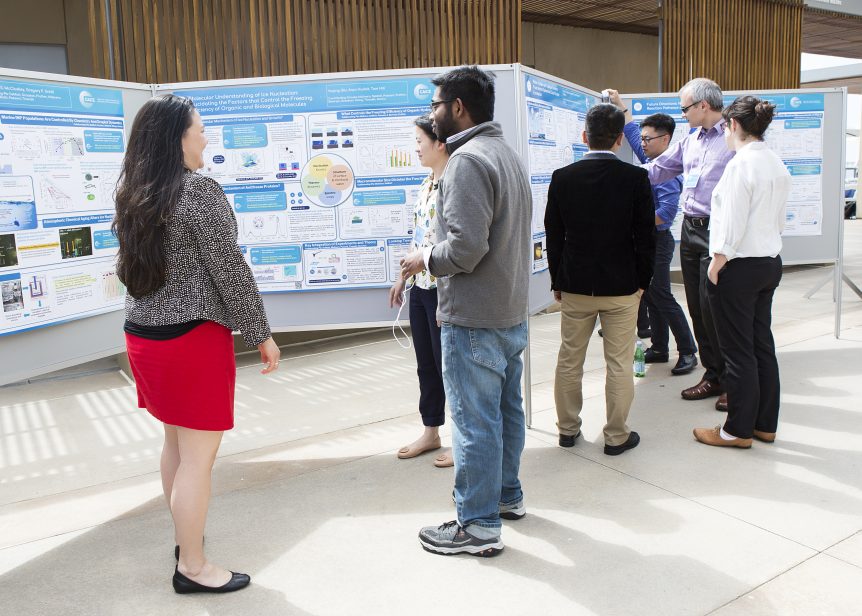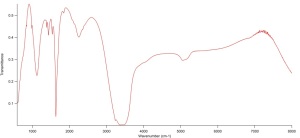After finishing my second year of undergrad at UCSD, I am thrilled to already be a part of the CAICE IMPACTS experiments. My interests revolve around understanding the surface chemistry of seawater and its impact on the selective transfer of species from the bulk seawater to the surface seawater and ultimately to the sea spray aerosols during the phytoplankton bloom in the wave-flume.
To get a sense of the changes occurring in the surface of the seawater, I have been measuring the surface tension in the sea-surface microlayer (upper most millimeter of the surface) and the bulk seawater (the water beneath the surface) using a tensiometer shown in the image on the right. Surface tension can be thought of as the force that causes a liquid’s surface to pull closely together for minimal surface area, and the tensiometer uses a platinum plate to measure the force the liquid exerts on it. I am looking for changes in the surface tension day-by-day in the wave-flume as the phytoplankton bloom progresses to see how this surface property changes and how it impacts the chemical properties of the surface water and sea spray aerosols.
To determine the changing chemical and biological composition of bulk seawater, sea-surface microlayer, and sea spray aerosols, I am using infrared (IR) spectroscopy, which essentially uses light in the infrared region to cause molecules to vibrate. These vibrations can be seen as peaks in the IR spectrum shown on the right, and each peak corresponds to a certain chemical group. It should be interesting to see if changes in functional groups are apparent to better understand the transfer of molecules from the surface of the ocean to sea spray aerosols.
While learning all of the chemistry behind CAICE is exciting, the true nature of its impact on my undergrad experience comes from the diversity and perseverance of everyone I have met. From biologists to oceanographers, I am so grateful to be around this atmosphere of scientists coming together to work on the impact sea spray aerosols have on our climate and environment. I have met numerous PIs, postdocs, and grad students, and they have all given me insight into what I want to do in the future. I want to continue to explore and help determine the true impact the changing environment has on our lives and how we can all make the effort to improve our understanding of the world’s scientific complexity.
Joshua L. Cox, Undergraduate Researcher, Prather Group, Dept. of Chemistry and Biochemistry, UCSD



